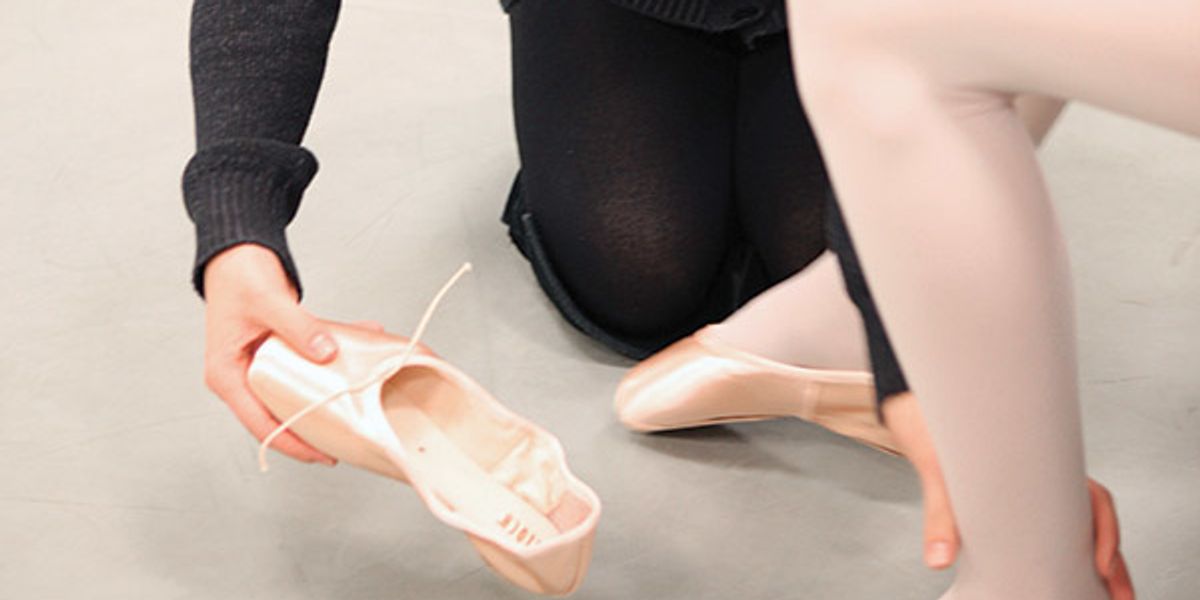If the Shoe Doesn't Fit: 7 Pointe Shoe Buying Mistakes to Avoid
If your pointe shoe buying routine involves going online and clicking “reorder” on the shoes you’ve worn for years, it might be time to get a fresh, in-person assessment. Even a slightly different shoe can solve a host of issues—and help you avoid problems in the future. Find the best fit for your feet by avoiding these mistakes.
Mistake: Pushing Through Pain
“The culture of ballet can teach you to push through being uncomfortable,” says Josephine Lee, founder of The Pointe Shop in Santa Ana, California, “but a lot of times, shoe-related discomfort is easy to fix.” If you’re plagued by bruised toenails, blisters or corns, those may be signs you need to go in for a fitting. A professional shoe fitter would likely be able to pinpoint whether your problem lies with width, length or another aspect.
Mistake: Ignoring Injuries
A better shoe might also be the key to performing with less pain. Dr. Thomas M. Novella, a podiatrist who’s worked with dancers from New York City Ballet, American Ballet Theatre and other companies, cites several injuries that can be caused or worsened by dancing in the wrong shoes. For instance, “a too-short vamp, where ‘toe cleavage’ is visible, will fail to support the top of the foot on pointe,” he says. One possible end result: stress fractures at the base of the metatarsals. Meanwhile, a too-high vamp can lead to jamming injuries in the ankle, as you push to get over the platform.
Mistake: Buying The Wrong Size
Adults’ feet can fluctuate in size—and not just from one year to the next. Novella notes that feet can change within a single season, expanding during warmer weather or periods of intense activity, and shrinking again when it’s cold or the activity level decreases. He advises setting aside shoes for both scenarios.
Another common issue is feet that are two different sizes. “If you’re getting toenail bruises, blood blisters or other signs of compression, but only on one foot, have someone check each foot’s size,” Novella says. The solution might be to buy two pairs at a time—one for the right foot and one for the left.
Mistake: Fearing What’s New
Even if you trust your current style, it can be worthwhile to look into recent releases. Each year, the industry announces innovations in materials, construction and design. “There might be technology inserted into a shoe that could really help you,” Lee says.
Mistake: Following A Trend
The hottest new shoe might look great on someone else but be entirely wrong for you. “We fit to technique as well as to foot shape,” Lee says. A knowledgeable fitter will be able to guide you toward—or away from—the latest trends, keeping your specific needs in mind.
Mistake: Changing Everything
Remember, you don’t have to swap out every shoe element at once.
“If you’ve learned that a certain platform width, vamp length or shank firmness works, but you discover that you need a half-length longer, only change the length,” says Novella. That way, the new shoe will still feel somewhat familiar.
Mistake: Giving Up Immediately
Be prepared to take time to acclimate. “You might not enjoy the first month in the correct shoe,” Lee warns. “When dancers are comfortable in the wrong shoes, changing can feel ‘wrong’ before it feels right.” Some discomfort early on doesn’t necessarily mean you’ve made a bad choice; your body simply has to adjust.




